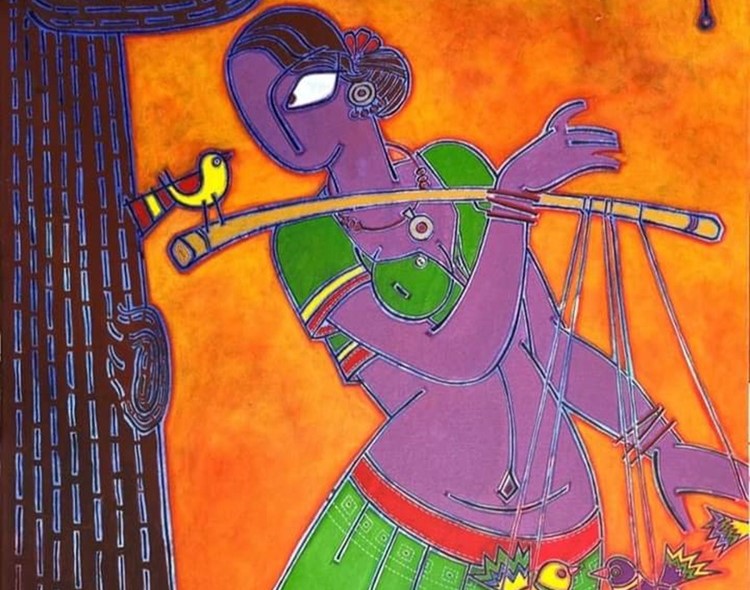Santanu Nandan Dinda, born in 1966, is a contemporary artist from Jamshedpur, Jharkhand. His paintings are a dream-like imagination of a culturally vibrant India executed through his humbled forms, bold lines and exuberant colour palette. Hailing from a small village, Santanu grew up surrounded by nature, townships and families. Villages in India are a plethora of emotions, often romanticized by urban dwellers and popular media; however, Santanu, in his paintings, portrays a rather shy echo from these villages that meticulously come together to propagate harmony for its viewers.
Culture, worship and devotion harbour in every nook and corner of India. India’s diverse regions and cultures are connected by a rich cultural fabric exemplified by idol-making. It is a material embodiment of spirituality, artistic talent, and enduring community ties. This tradition left a solid and profound impact on the heart of a child, which manifested his journey towards being an artist.
Walking through the streets of Jamshedpur, I would observe the artists and sculptors making idols of Goddess Durga for the annual celebration of Durga pooja, and I would stand there for hours observing them at work. I would then go home and recreate a smaller version of that idol.
Recreating these idols with his cousins became Santanu’s favourite pastime, slowly drawing him towards the mythological stories and echoes of devotion. Artisan workshops primarily used tools available in the environment, like bamboo sticks, clay, mud, glue, natural colours from flowers and leaves, etc. These idols weren’t just simple sculptures; they represented the hope and ideals of society. All this is amusing and exciting for a child, as it opens infinite creation possibilities.
This enthusiasm tapped into many questions for young Santanu, ‘What is painting? What are colours, and how do we make art?’ These questions found an outlet in drawing classes within the school through encouragement from teachers and appreciation from colleagues. This led to his enrollment in an art school.
Art School & Science School
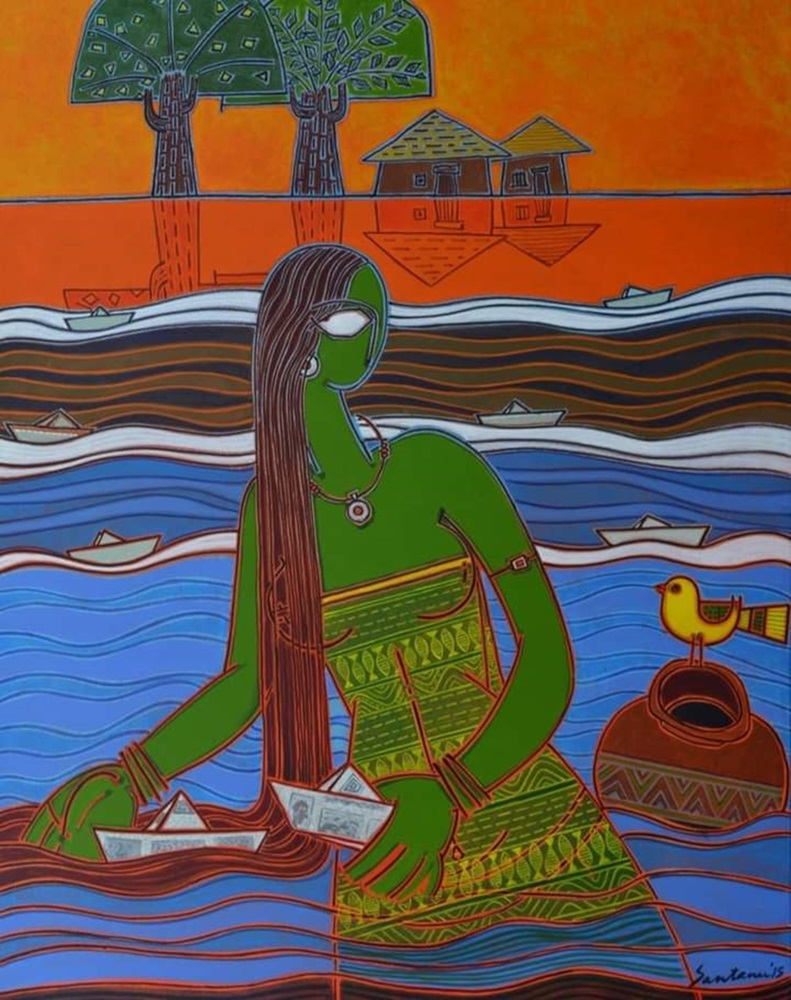
If we look closely enough, we might see how art and science are both attempts of humanity to understand and describe the world around us. However, science is recognized as a noble pursuit with financial stability by societies and art as a mere hobby. Troubled by society’s norms, Santanu’s family insisted he pursue science and his arts degree. In 1983, he enrolled in a Bachelor of Science (Hons.) and a Diploma in Fine Arts from Tagore School of Arts & Crafts, Jamshedpur. After his graduation, he got a campus placement in a research centre, pursued his science degree to support his family, and simultaneously pursued his diploma. In 1990, to help his vision and passion, he started teaching fine arts at his alma mater (1990 – 2008)
From 1990 till 2008, I taught my students the fundamentals and essence of art and strengthened my base. Every master artist has a solid baseline to fall on, and this period marked mine. Post-1996, Santanu Nandan Dinda started exhibiting his paintings, and the first exhibition he participated in was an annual show by Group Graphia in Jamshedpur.
An impression of rustic India
The city of Jamshedpur in Jharkhand has a relatively calm non-metro environment. It’s pretty clean, organized, populated with green lands, and a home where cultures from all over the country can be mixed. Tribals constitute around 28% of the total population, covering a significant part of Jamshedpur. Tribal communities often engage in indigenous folk art forms. They would decorate the walls and floors of their home with simple line and shape motifs. Since Santanu Nandan Dinda’s home was near these areas, he developed a soft corner and inclination towards folk art forms.
While reminiscing a fond incident from childhood, he says: In my childhood, we visited our native village once or twice a year. During the day, ‘Patua’ (Pattachitra artist) used to come and sing songs after unfurling his Pattachitra scroll. Pattachitra is a traditional folk art associated with Orissa and West Bengal. Santanu’s works have strong inclinations towards folk art forms of India, especially the ones that are intertwined with his childhood memories.
Picasso Influence
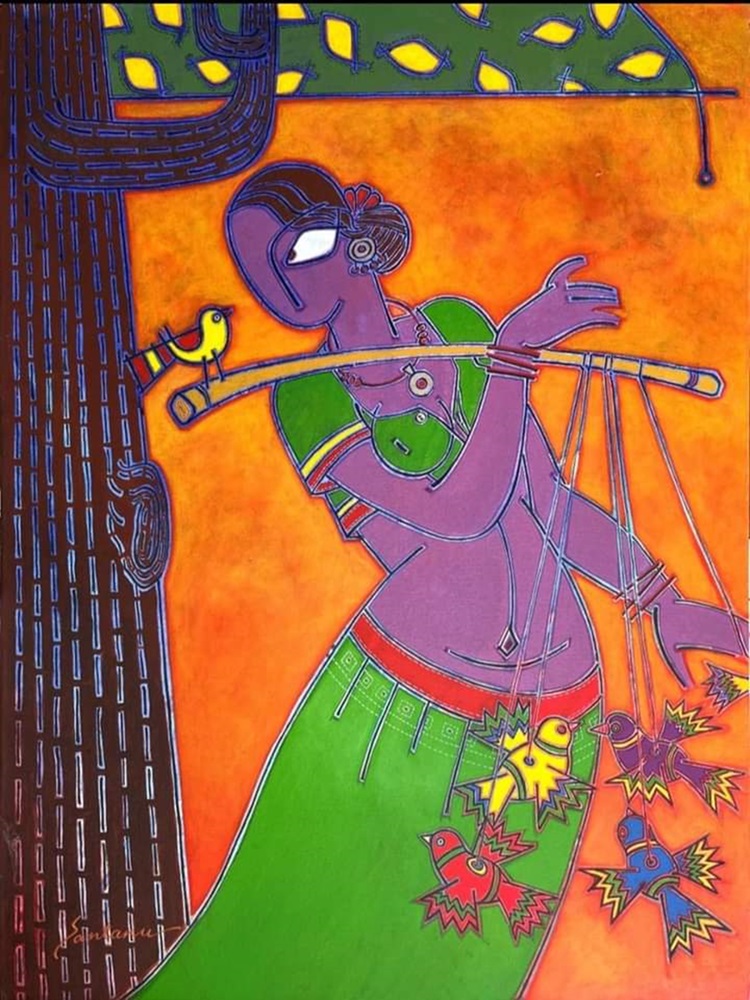
My mother told me, ‘If you are a soldier, you will become a general. If you are a monk, you will become the pope.’ Instead, I was a painter, and I became Picasso-Pablo Picasso
Pablo Picasso (1881 – 1973) was an artistic genius. He influenced the development of modern and contemporary art with unparalleled magnitude. Almost all artists study him and his style for inspiration, research, or pure bliss. For Santanu Nandan Dinda, Picasso’s vibrant forms and strong, bold lines attracted him towards his works. Even while looking at the works of this modernist master, Santanu found resemblance and similarities with Indian folk forms.
For me, Picasso’s cubism and Mattise’s expressionism are European regional modern art. I strongly manifested and believed in Picasso’s philosophy towards art, which first involved a sincere approach to learning all the proportions and forms and then breaking them to develop individual styles. He preaches the same to his students. In his tribute to the master artist, he painted ‘Lady on a Red Chair’ Early pioneers of modern Indian art, like Rabindranath Tagore, Jamini Roy, A.R Chughtai etc., also inspired him.
Montage
Montage is an artist group co-founded by Santanu Nandan Dinda and his wife, Sunita Nandan Dinda, in 2005. It is a group of visual artists from the city of Jamshedpur to further the cause of art, exhibitions and the joy of creating. This group planned four exhibitions and three camps yearly, giving everyone involved an opportunity and hope. In 2006, the TATA group collaborated with the group to create an art camp.
Painting for pleasure
The meaning of art is straightforward for me. It expresses my feelings; It’s not about what others think or don’t. The artist takes pride in not indulging in commercial works. He is very clear about his approach towards painting and art; his paintings are very much centred towards his expression and happiness. He feels that people should feel a sense of joy and positivity flowing in their homes or spaces whenever they buy his painting. I paint as if I am putting life into it, and the only way to do it is if you do it yourself!
Compositions & Style
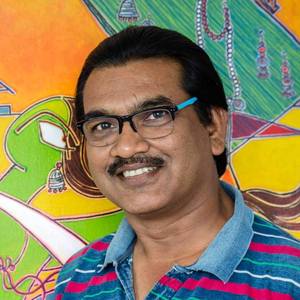
The protagonist in Santanu’s paintings is a woman. Most of his paintings demonstrate the different moods and preferences of women in their day-to-day activities; sometimes, they are cheerful, sometimes sad, and sometimes, they are just lost in their thoughts. In a few paintings, that woman is accompanied by a cat or a fish. The artist intervenes in his painting through these animals.
But why women?
I hold the female gender in high regard. Since my childhood, I have observed and felt to my core that women are more hard-working. From Devi Pooja to everyday field work, they excel in everything. So, when it was time for me to express myself, there was no other form I could think of.
A Brush of Change
In 2008, Santanu Nandan Dinda and his family moved to Gujarat for better job opportunities and financial stability. He was appointed as the head of the Chemical & Physical Laboratory. Carrying the impressions and love from Jamshedpur, he found himself in a new city with new challenges and social circles. He started working as an Applied Arts teacher at Tapovan International (2016) School, Mehsana, Gujarat and continued to do so till 2020.
The COVID wave in India in 2020 changed many lives all across the country and the world. People losing jobs, livelihoods, and loved ones triggered an urgent sense of embracing life as it is in the present. After COVID, Santanu Nandan Dinda left his job and worked full-time as a freelance artist. Presently, he works as an artist full time, specializing in [specific art form or style], and from time to time dedicates his guidance to young kids in need. His morning routine starts with a walk-in, followed by work, family time, and back to work.
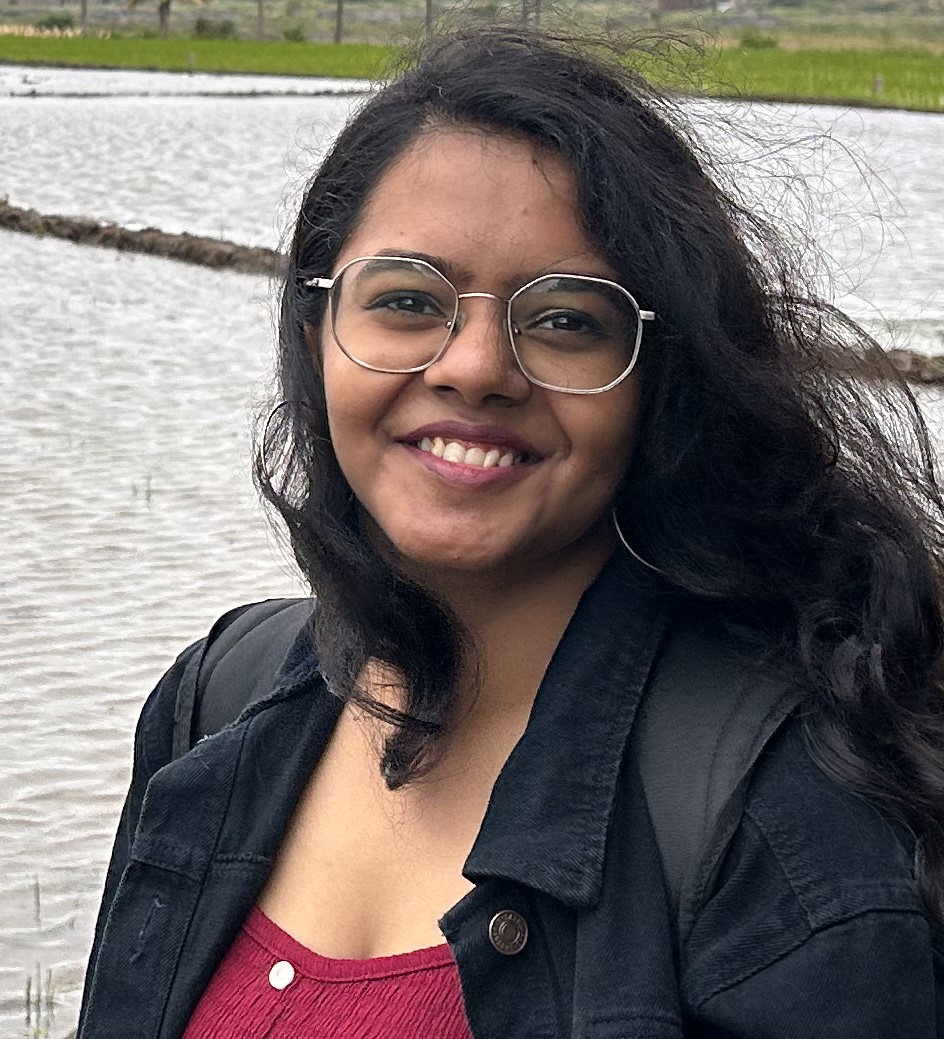
Pallavi Baheti is a creative practitioner from the field of art and curation.

